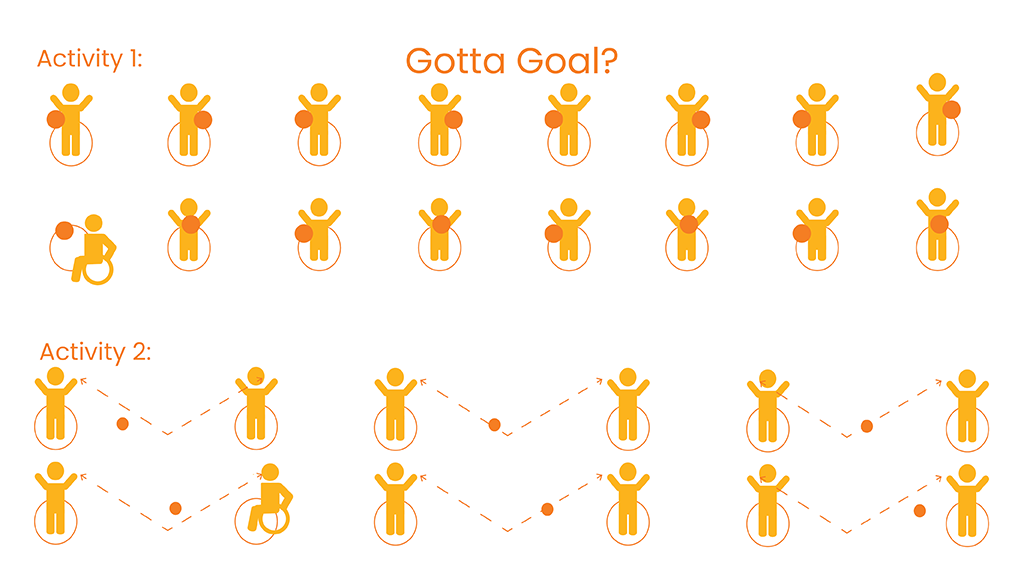Gotta Goal?
Learn about setting short-term goals during a throwing and catching activity.

Game
Learn about setting short-term goals during a throwing and catching activity.

Aim high! Make a plan to reach you goals!
Say: Let’s see if you can solve some riddles about the four parts of fit. I will give you a clue, then you guess whether I am talking about recharge, mood, food, or move. (Practice each movement before you read the riddle clues that follow.)
Here are the clues:
You can set recharge, mood, food, or move goals to make healthy choices. Goals can be big (long-term goals), like wanting to be an astronaut or playing on a professional sports team, or small (short-term goals), like drinking water instead of soda or turning off screens in the evening. Goals always start with a plan. Without a plan, a goal is just a wish.
To set a goal, remember G-O-A-L-S:
The number one thing you need to know is to set a goal, you need a plan!
Today we are going to practice setting goals. You will do throwing and catching activities, then make a plan and set a goal to improve your throwing and catching skills.

Describe a goal you will work on this week. What is your plan?
Learners practice healthy recharge, mood, food, and move choices at fit activity stations.
Play GameUse movement to show preferences for healthy recharge, mood, food, and move choices.
Play Game